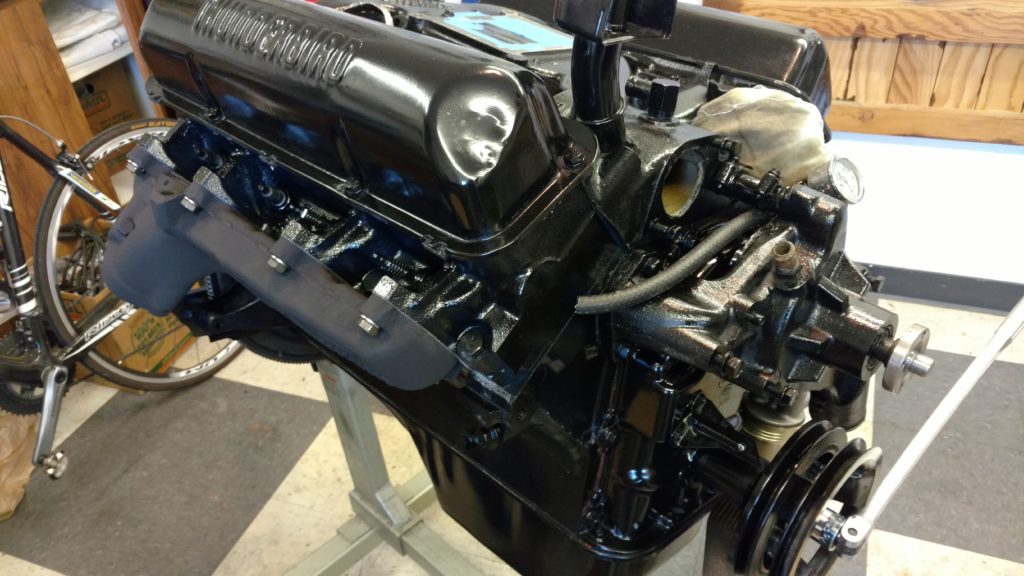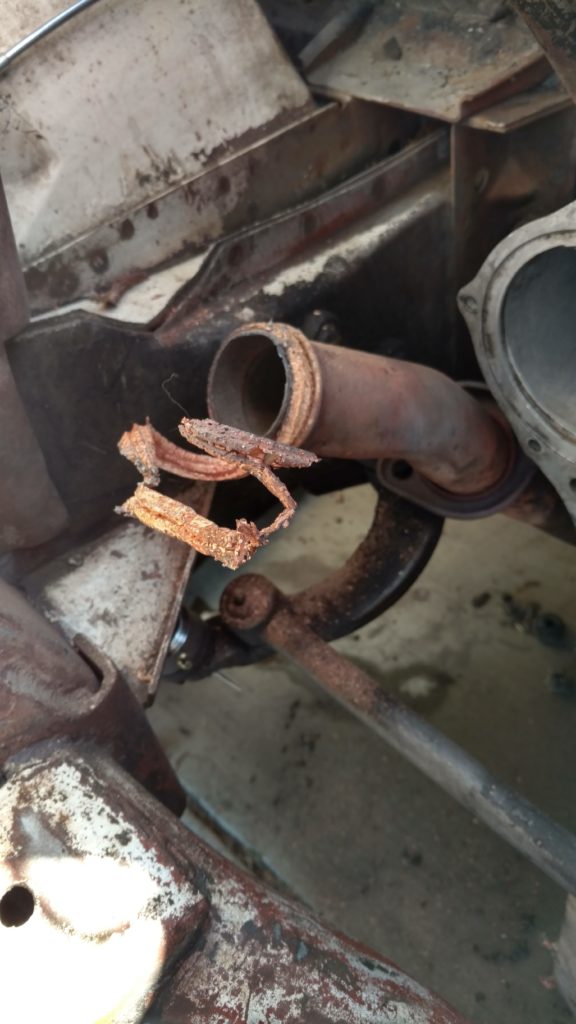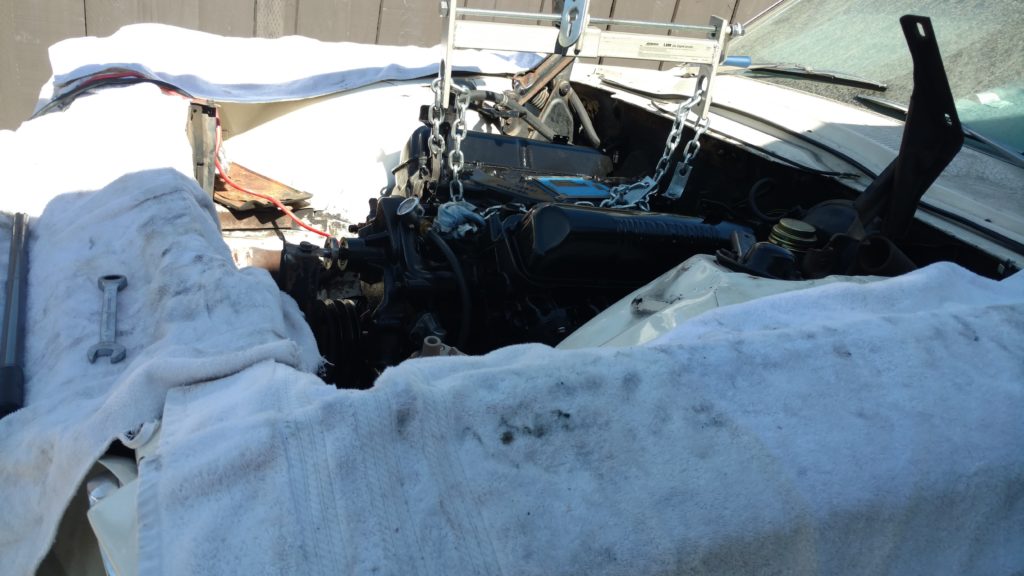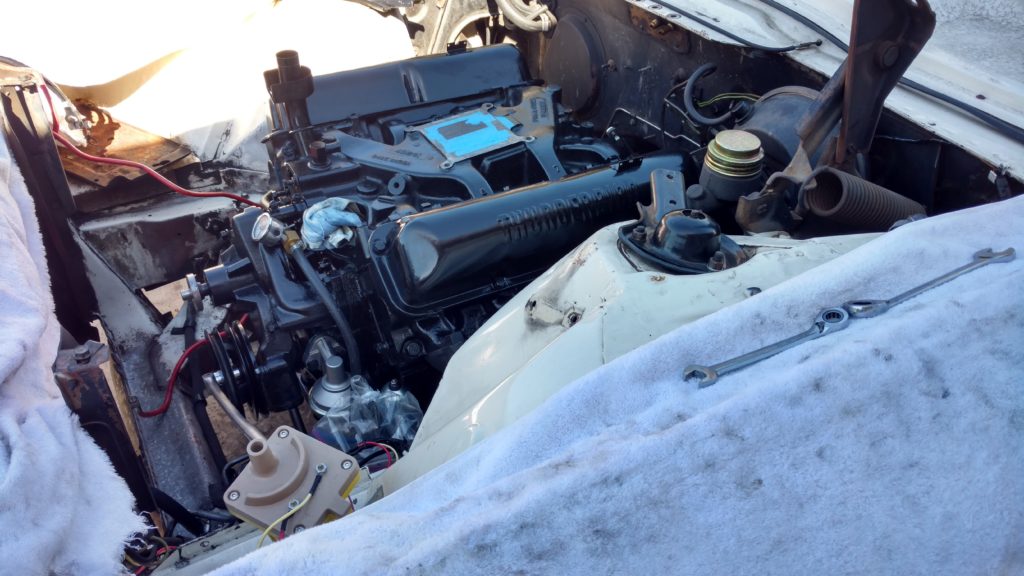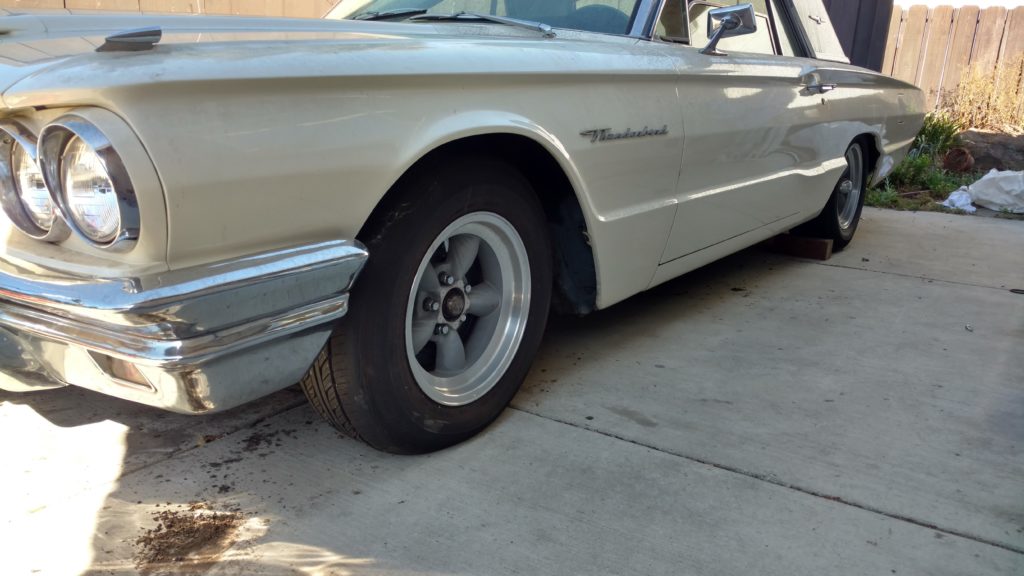Shortly after I got the engine installed, an unusually heavy early-season rainstorm appeared in the forecast, and I had a choice between rushing through the final steps of the engine and suspension project or preparing for the coming weather. (The car’s interior is reasonably weather-resistant, but I still have a considerable leak into the trunk.) I hated the idea of rushing things at the end, so when I found a reasonably priced car cover (only $40!), the deal was sealed.
I spent the week cleaning oil-caked parts, painting those that had never been off the car and occasionally repainting items that I’d done before, but have seen some wear and tear over the years—like the braces that run from the shock towers to the firewall.
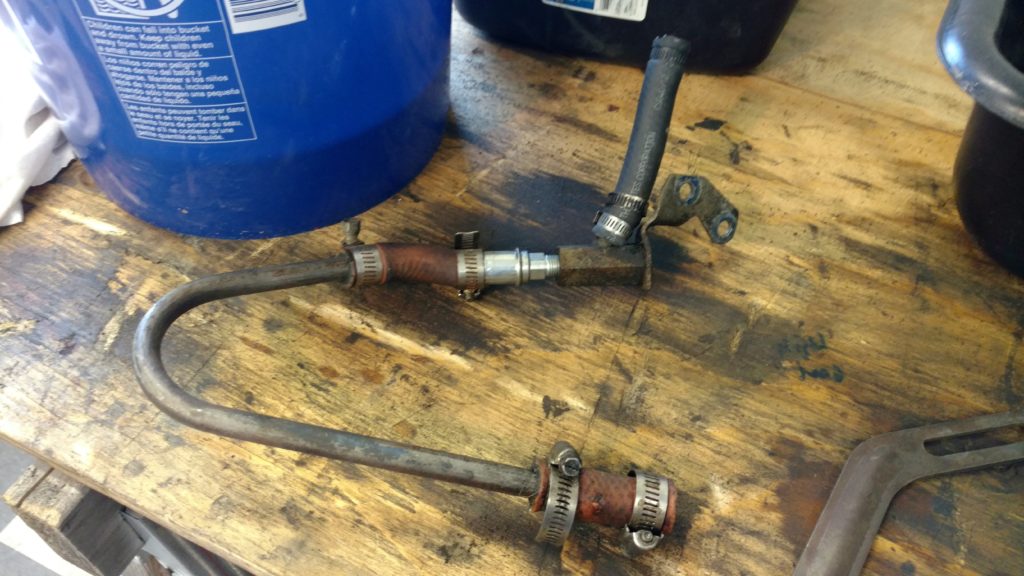
Working steadily over the week, I closed up the motor some more by installing the carb, new spark plugs and the distributor. The most difficult task was the small shaft under the distributor that drives the oil pump. Originally, I think, there was a snap ring installed on these to hold it in place. Mine doesn’t have that, and it simply fell out when I turned the motor over while on the stand. I thought it would be easy to drop it in again. Instead, it landed slightly askew in the recess, too far down to be removed and in a spot too narrow to reach with most tools. I could touch it with a skinny flat-bladed screwdriver, but didn’t have the leverage to straighten it up or pry it back out. Finally, I used the distributor itself to ease everything into place. Everything seemed to seat properly, but it’s one of those things you can’t verify visually. I’ll have to wait until the motor is ready to turn over before I know for sure that all is well.
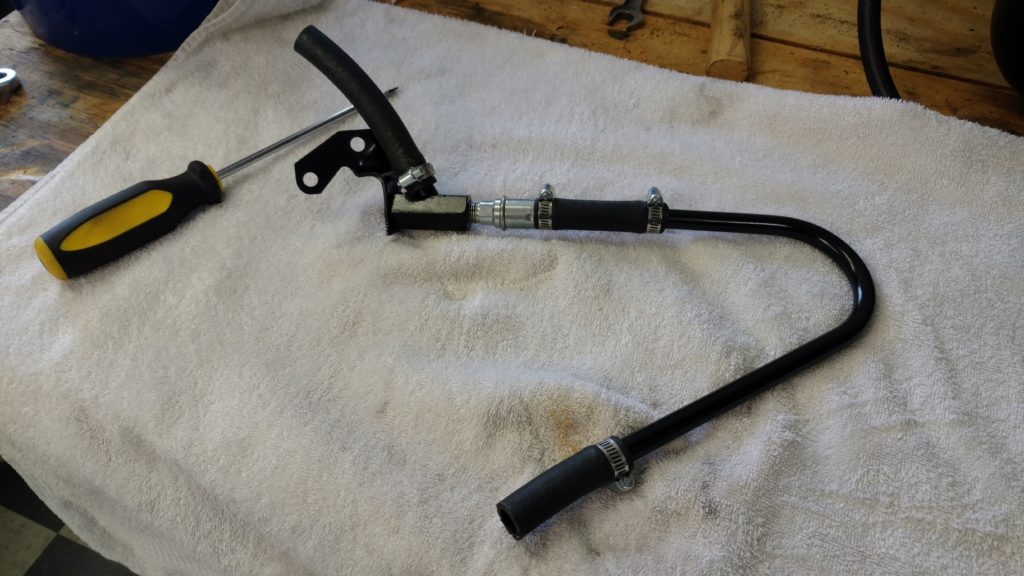
I also struggled with the dipstick tube. The one on the engine was in two pieces connected with a short piece of rubber fuel line. I bought a replacement and tried to install it after the motor was back in. The tube is a press fit and a pretty tight one at that. It’s curved, so tapping one end with a mallet doesn’t drive it in; it can’t be twisted in either—too many things interfere. I finally resorted to a grinder and file to shave the tube down a bit, then installed it with some sealant. I now understand why someone would cut the thing and install it the way it was. I’m not sure my way will be better, leak-wise.
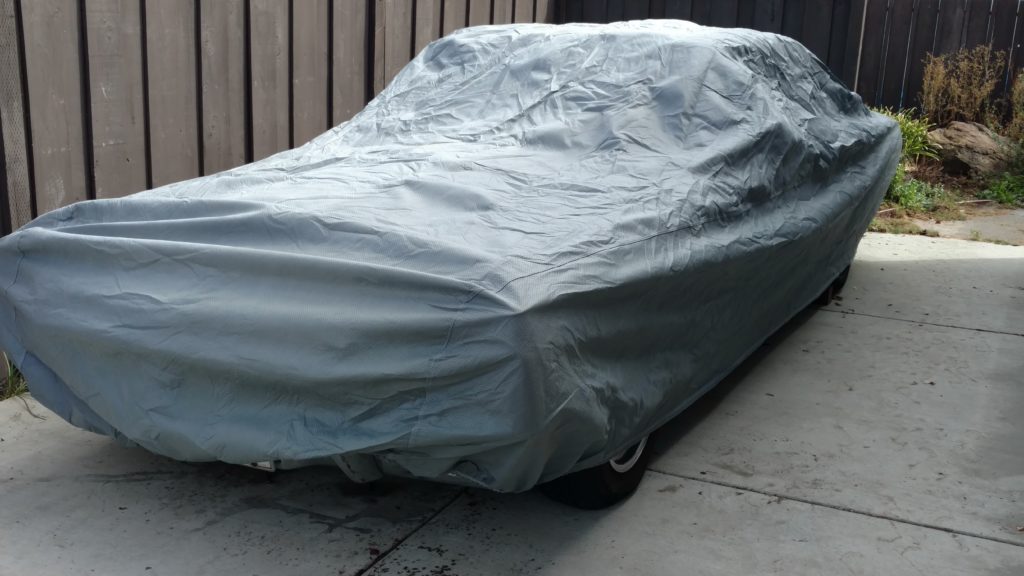
By the time the rain started, I had the alternator, radiator, fan, pcv system and other items installed. I still need to crawl under the car to get the exhaust hooked up and starter installed. On top, the power steering pump is cleaned and ready to go, including all new hoses.

